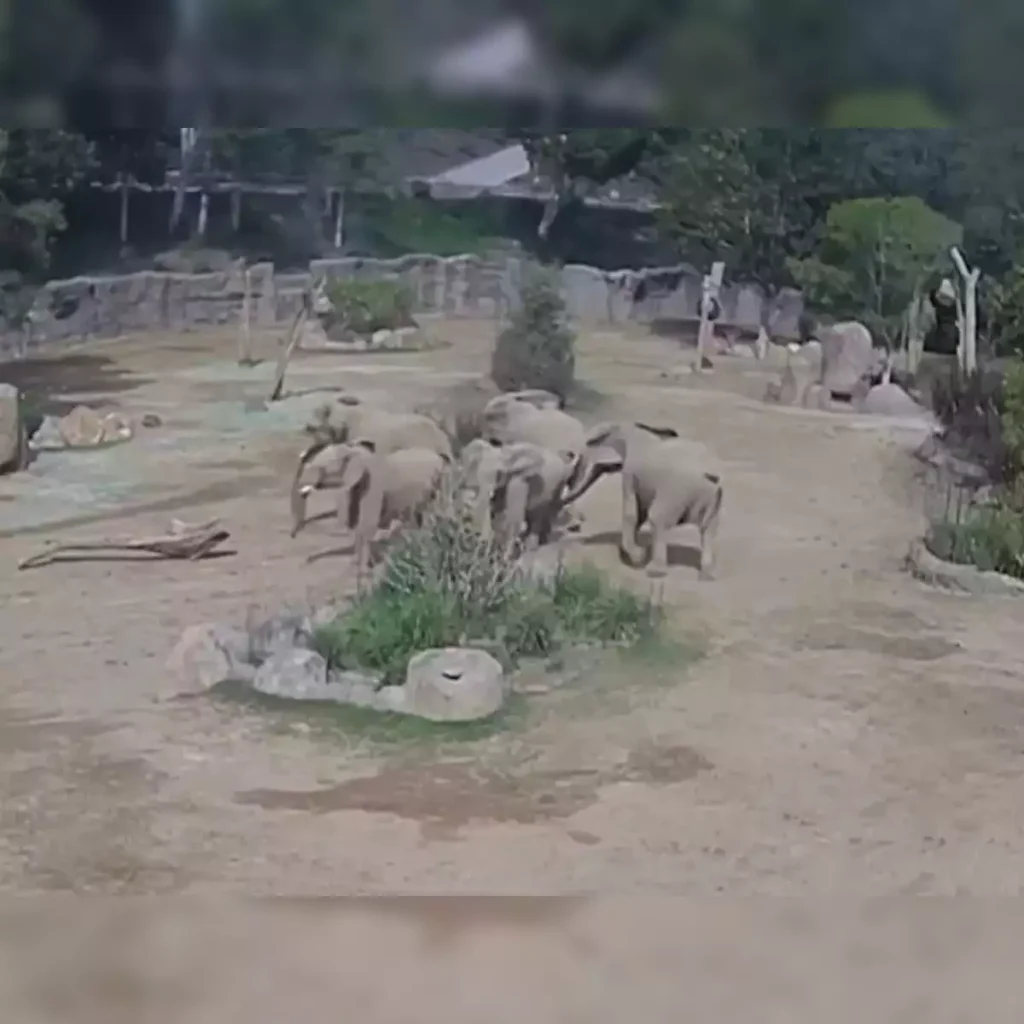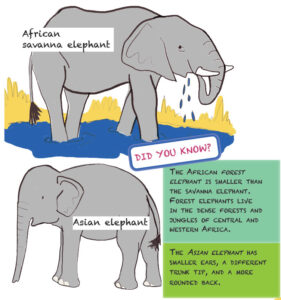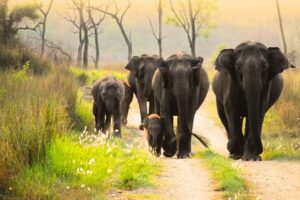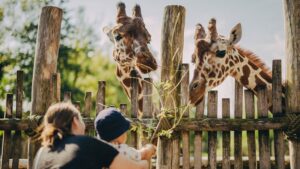
San Diego Zoo Safari Park Elephants Gather in an ‘Alert Circle’ Amid Earthquake
On what began as an ordinary day at the San Diego Zoo Safari Park, nature took a dramatic turn. A mild earthquake rippled through Southern California—an event that, while common in the region, still catches people by surprise. But it wasn’t only the humans who reacted. In a remarkable display of awareness and unity, the park’s elephants quickly formed an “alert circle,” a natural, protective behavior that stunned zookeepers, visitors, and online viewers alike once video footage emerged.
This moment wasn’t just heart-stirring—it offered deep insight into the intelligence, empathy, and group instincts of one of the world’s most majestic animals.
Bhu Bharathi: Where the Soil Speaks and Stories Bloom 2025
What Is an “Alert Circle”?
![]()
In the wild, elephants form an alert or protective circle when they perceive a threat. Adults, especially the matriarch and other females, surround the younger or more vulnerable members—calves, elderly elephants, or those in distress. Their massive bodies form a wall, tusks facing outward, ready to defend their own from predators, unknown dangers, or in this case, seismic activity.
This behavior is instinctive and deeply embedded in elephant society. It demonstrates their strong sense of family, social order, and their acute ability to detect environmental cues long before many other animals do.
How Did the Elephants Know?

Elephants are incredibly perceptive. Studies have shown that they can sense vibrations through their feet using special cells called Pacinian corpuscles. These allow them to pick up subtle ground vibrations, including those caused by distant thunder, running herds, or, notably, the tremors from earthquakes. In some cases, elephants have been observed reacting to seismic activity seconds or even minutes before humans feel it.
At the Safari Park, footage captured this uncanny awareness: moments before the quake was perceptible to people, several elephants raised their heads, flared their ears, and began moving with purpose. The matriarch, often the decision-maker in elephant herds, initiated the circle, guiding younger members toward the center. Within seconds, the entire group had assumed a coordinated, protective stance.
A Glimpse Into Elephant Society

What makes this so profound is not just the physical act of circling up, but what it reveals about elephant society. These animals live in complex, matriarchal herds where every member plays a role. Bonds between individuals are deeply emotional. Elephants grieve their dead, celebrate births, and engage in what many researchers call “altruistic” behavior—helping others, even at a cost to themselves.
In times of stress or perceived danger, their natural reaction isn’t to flee or panic, but to group together and protect one another. It’s a testament to their intelligence and deep-rooted social structures.
Human Reactions

Visitors who witnessed the event in person were reportedly awe-struck. Some noted how the elephants’ quick and coordinated behavior was more organized than the human response around them. Many took to social media to express admiration and wonder, while others raised questions about how animals can sense things that we often can’t.
The zoo staff, though familiar with the elephants’ behaviors, were equally impressed by how swiftly and decisively the herd reacted. One zookeeper remarked that it was “a textbook example of instinctive herd protection,” adding that it also served as a powerful educational moment for guests at the park.
The Role of Zoos in Observing Natural Behavior

One of the most compelling aspects of this event is how it played out in a human-controlled environment. Critics of zoos often point to the artificiality of captivity, but moments like this show that many wild behaviors remain intact in well-maintained facilities. The San Diego Zoo Safari Park is known for its expansive, naturalistic habitats, which allow animals to engage in behaviors similar to those they would exhibit in the wild.
In this case, the elephants’ reaction wasn’t prompted by humans, trainers, or even visible cues. It was pure instinct—evidence that their evolutionary intelligence and group dynamics are alive and well.
What Can We Learn?

This event is more than just a viral video or a heartwarming moment—it’s a powerful lesson. It reminds us of the depth of animal consciousness and the things we still don’t fully understand about other species. Elephants, often dubbed “gentle giants,” have consistently challenged our assumptions about non-human intelligence, emotion, and memory.
Their behavior during the earthquake teaches us about:
Preparedness: While we scramble during natural disasters, elephants have built-in social protocols to deal with crisis.
Empathy: Their first instinct is to protect the vulnerable.
Leadership: The role of the matriarch is not just symbolic; it’s functional, guiding the group through uncertainty.
It also opens up discussions about how animals experience fear, process information, and make decisions in real time. And it nudges us to consider our place within the larger web of life—not always at the top, and certainly not always the most aware.
Conservation Message

As magnificent as this moment was, it also brings to light the importance of elephant conservation. In the wild, elephants are facing increasing threats: habitat destruction, poaching, human-wildlife conflict, and climate change. Every behavioral insight we gain helps scientists and conservationists create better strategies to protect them.
The “alert circle” seen at the Safari Park is something that’s likely played out countless times across the plains of Africa and forests of Asia—but without cameras to capture it. By witnessing and sharing such events, we build empathy, understanding, and hopefully, momentum to protect these animals for generations to come.
Final Thoughts
The sight of elephants forming a circle—silent, powerful, united—is more than just a snapshot of animal behavior. It’s a reflection of nature’s wisdom, the silent communication between beings, and the ancient instincts that still guide life on Earth.
In a world often overwhelmed by chaos, the elephants at the San Diego Zoo Safari Park gave us a moment of clarity. A moment where instinct met intelligence, where fear met unity, and where the line between “animal” and “sentient being” blurred, just a little more.
And maybe, in watching them, we learned something about ourselves.





